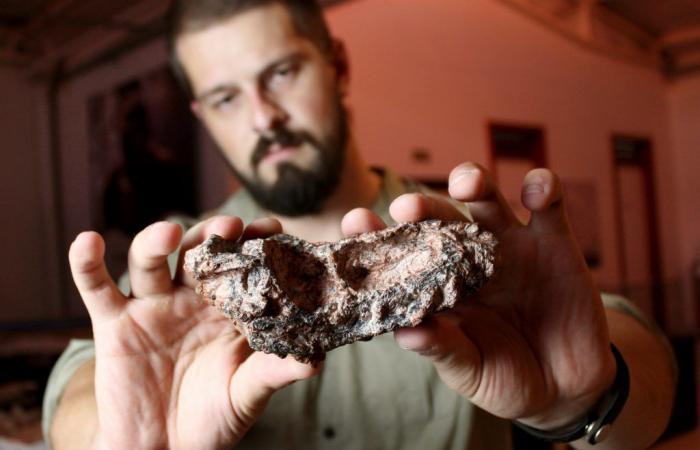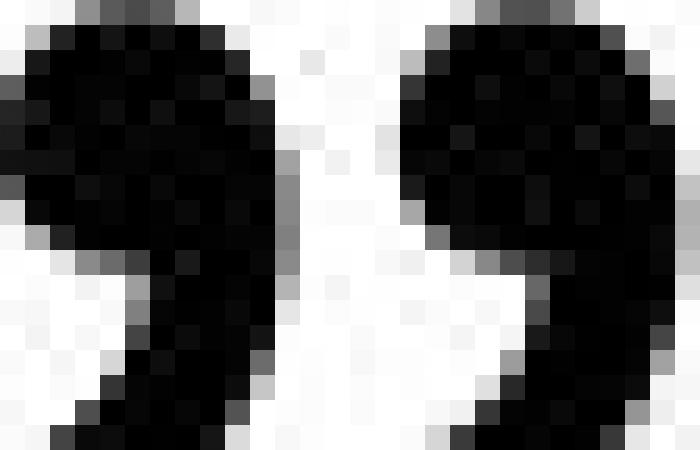Before the domination of the dinosaurs, the pseudosuchians (Pseudosuchia, ‘false crocodiles’) were quadrupedal reptiles that lived during the Triassic period (between 252 and 201 million years ago). These animals, whose smaller specimens are called gracilisuchids (Gacilisuchidae), they coexisted with some of the largest carnivores of the time.
Now, the Brazilian paleontologist Rodrigo Müller has described in Scientific Reports a new genus and species of gracilisuchid, from the remains of a specimen found in the geological formation of Santa María, in southern Brazil. This site is famous for having also found dinosaur remains there.
The gracilisuchids were small and carnivorous. The largest individuals reached 1 meter in length. Until now, remains of these ancient reptiles had only been found in sites in China and Argentina.
Gracilisuchids were small and carnivorous. The largest individuals reached 1 meter in length. Until now, fossils of these reptiles had only appeared in China and Argentina
Müller, who is a researcher at the Federal University of Santa María (UFSM, Brazil), tells SINC that he made the discovery while analyzing fossils donated to his institution by the amateur paleontologist Pedro Lucas Porcela Aurélio.
Among the remains, some caught his attention. articulated vertebrae embedded in thick rock. Immediately, he began the preparation process with the help of acid solutions and pneumatic hammers.
During this step, parts of the skull were removed from the rock, revealing a full skull. Anatomical research indicated that these fossils belonged to an unknown reptile. On the other hand, some features seemed to be similar to the enigmatic gracilisuchids.
Paleontologist Rodrigo Müller holds the fossil skull of ‘P. aurelioi’ / Janaína Brand Dillmann
partial skeleton
The partial skeleton dates from about 237 million years ago and consists of a complete skull including the lower jaw, 11 dorsal vertebrae, a pelvis, and partially preserved limbs. These characteristics classify this specimen as a gracilisuchid, which makes it the first species of this group confirmed in Brazil, according to the researcher.
The remains found include a complete skull with the lower jaw, 11 dorsal vertebrae, a pelvis and partially preserved limbs.
The author has named the new species Parvosuchus aurelioi, which derives from ‘parvus (small) and ‘suchus’ (crocodile). The name pays tribute to Pedro Lucas Porcela Aurélio, who, in addition to having donated them, was the one who found the fossils.
The teeth of this small predatory reptile were blade-shaped adapted for eating meat and were specialized in hunting small prey.
As Müller tells SINC, “the discovery of the remains of the Parvosuchus aurelioi in the Santa María Formation, which has also housed bones of some of the oldest dinosaurs, gives clues to the ecosystems that existed before the dawn of the age of dinosaurs.”
Complex ecosystems
For this reason, he adds, “the presence of this small reptile among fossils of much larger predators suggests that these ecosystems, where Brazil is located today, were very complex.”
According to the paleontologist, “this discovery reinforces the idea that pseudosuchians were ecologically diverse.” Something that, he says, “could already be observed in the findings in Argentina.”
He highlights that “the discovery of these fossils, among an already relatively diverse fauna in Brazil, demonstrates that this pattern was not exclusive to Argentina, but perhaps a common condition in other parts of Pangea”.
Furthermore, “the appearance of a Gracilisuchidae “In Brazil it expands the geographical distribution of these reptiles,” he emphasizes.
Rodrigo Müller explains that “although the new species shares typical features of the group with other gracilisuchids, such as the configuration of one of the openings in the posterior region of the skull, it also has Unique features. Some of these are the orbits located at a higher level, the craniomandibular joint located above the dental margin and a proportionally short pelvic girdle bone.
‘P. aurelioi’ represents another piece in the evolutionary puzzle of the lineage that later gave rise to crocodiles
Rodrigo Müller, author of the study (Federal University of Santa María)

In your opinion, “P. aurelioi represents another piece in the evolutionary puzzle of the lineage that later gave rise to crocodiles. It reveals that, during the early evolution of pseudosuchians, several branches spread across Pangea, occupying different niches. The group reached evolutionary success before the origin of the dinosaursbut suffered a loss of diversity when these appeared.”
On the other hand, he concludes: “The lineage that gave rise to crocodiles did not disappear during the Mesozoic Era, since it coexisted with different types of dinosaurs and has survived to the present day through caimans, crocodiles and gharials.”
Reference:
Rodrigo Müller. “A new small-sized predatory pseudosuchian archosaur from the Middle-Late Triassic of Southern Brazil.” Scientific Reports (2024)




